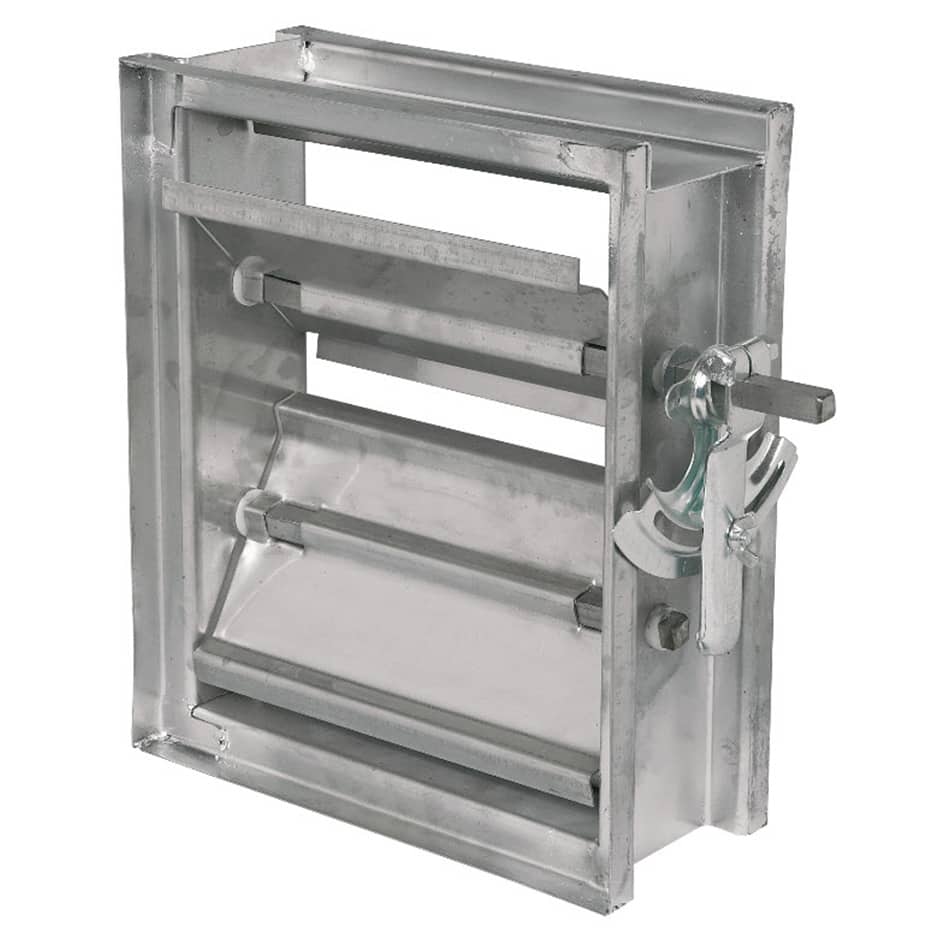Choosing the Right Blade Damper

Choosing the Right Blade Damper
Blade dampers are structures consisting of thin metal plates used to stop or regulate the flow of air inside air handling equipment such as ducts, chimneys, and HVAC systems. They are primarily necessary to ensure air handling systems run smoothly and efficiently. Dampers can also be used to control central air conditioning or regulate room temperatures for the occupants of a house or building.
Blade dampers can either be manually or automatically operated. When controlled by hand, a lever or handle is used to adjust the angle of the damper blades as required. Automatic dampers are controlled by electric or pneumatic actuators, which are operated by electronic sensors and controllers linked to a thermostat or a building automation system.
There are typically two different types of blade dampers used to modulate air flow: parallel and opposed blade dampers. Parallel blade dampers are designed in a way so the blades move in the same parallel direction (similar to a window louver) when opened. Opposed blade dampers have the blades moving in opposing directions. While these two systems sound similar, they perform differently, making them each suited for applications with varying requirements.
Parallel vs. Opposed Blade Dampers
These two dampers have unique flow characteristics due to their distinct construction. On a graph displaying the relationship between flow rate and position of the blades, both opposed blade dampers, and parallel blade dampers exhibit nonlinear characteristics. However, an opposed blade damper have a shallower curve with a pronounced slow increase in flow rate as the dampers begin to open.
In contrast, parallel blade dampers have a relatively steeper, more aggressive flow rate to damper position curve. As the dampers open, the flow increases more rapidly compared to opposed blade dampers.
In practical terms, this means parallel blade dampers are better suited for volume control applications from wide open to 75% of wide open. Since the air flow in parallel blade dampers is more sensitive to arm swings, small changes in damper position can yield significant temperature changes. As such, parallel dampers are commonly used for open/close applications. These dampers are also less complicated and more cost-effective than their opposed blade counterparts.
Opposed blade dampers are ideal for applications requiring volume control over a broader range, from wide open to 25% of wide open. The arm swing of the opposed damper blades has a more proportional and controlled and damping effect, making the opposed blade configuration better suited for modulating applications.
Contact Alan Manufacturing, Inc. for Opposed Blade Damper
Alan Manufacturing, Inc. provides a wide array of HVAC damper systems, hardware and accessories, duct supports, and zone control systems for a range of industries. To learn more about which damping system is right for you, contact our support team today for more information

